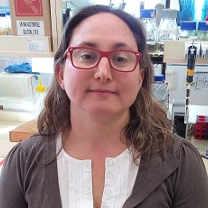Adipogenesis and Adipose Tissue Metabolism 2.0
A special issue of International Journal of Molecular Sciences (ISSN 1422-0067). This special issue belongs to the section "Biochemistry".
Deadline for manuscript submissions: closed (30 September 2020) | Viewed by 49274
Special Issue Editors
Interests: adipogenesis; adipocytes; white adipose tissue; adipokines; lipid metabolism; oxidative stress; obesity; lipodistrophy; metabolic syndrome; comparative endocrinology
Special Issues, Collections and Topics in MDPI journals
Interests: fish; zebrafish; salmon; rainbow trout
Special Issues, Collections and Topics in MDPI journals
Special Issue Information
Dear Colleagues,
Adipocytes are the major cellular constituent of adipose tissue, which exhibits different morphology and functions depending on the main types of adipocytes that compose it (white, brown, and beige). Two possible growth mechanisms of adipose tissue include hypertrophy (lipid accumulation within existing adipocytes) and hyperplasia (increase in cell number) through the process of adipogenesis. As a major source of energy storage, white adipose tissue has been largely considered to be a key metabolic organ. Nonetheless, despite the traditional view as a rather passive storage organ, adipose tissue has been later recognized as a multi-functional endocrine organ that plays a critical role in modulating not only whole-body energy metabolism and homeostasis, but also several other physiological processes, such as appetite and tissue inflammation responses. Henceforth, studies on the functional, developmental, and pathophysiological aspects of adipose tissue are of utmost importance. Thus, the aim of this Special Issue is to gather both reviews and research articles unraveling the mechanisms that underlie adipocyte differentiation as well as adipokines production and function to identify the major contributor(s) of obesity and lipid metabolism-related diseases, while works covering new insights into fundamental aspects of hormonal control of adipose tissue metabolism are also desirable.
Prof. Dr. Encarnación Capilla
Prof. Dr. Isabel Navarro
Guest Editors
Manuscript Submission Information
Manuscripts should be submitted online at www.mdpi.com by registering and logging in to this website. Once you are registered, click here to go to the submission form. Manuscripts can be submitted until the deadline. All submissions that pass pre-check are peer-reviewed. Accepted papers will be published continuously in the journal (as soon as accepted) and will be listed together on the special issue website. Research articles, review articles as well as short communications are invited. For planned papers, a title and short abstract (about 100 words) can be sent to the Editorial Office for announcement on this website.
Submitted manuscripts should not have been published previously, nor be under consideration for publication elsewhere (except conference proceedings papers). All manuscripts are thoroughly refereed through a single-blind peer-review process. A guide for authors and other relevant information for submission of manuscripts is available on the Instructions for Authors page. International Journal of Molecular Sciences is an international peer-reviewed open access semimonthly journal published by MDPI.
Please visit the Instructions for Authors page before submitting a manuscript. There is an Article Processing Charge (APC) for publication in this open access journal. For details about the APC please see here. Submitted papers should be well formatted and use good English. Authors may use MDPI's English editing service prior to publication or during author revisions.
Keywords
- adipogenesis
- adipocytes
- white adipose tissue
- adipokines
- lipid metabolism
- oxidative stress
- obesity
- lipodistrophy
- metabolic syndrome
- comparative endocrinology
Benefits of Publishing in a Special Issue
- Ease of navigation: Grouping papers by topic helps scholars navigate broad scope journals more efficiently.
- Greater discoverability: Special Issues support the reach and impact of scientific research. Articles in Special Issues are more discoverable and cited more frequently.
- Expansion of research network: Special Issues facilitate connections among authors, fostering scientific collaborations.
- External promotion: Articles in Special Issues are often promoted through the journal's social media, increasing their visibility.
- e-Book format: Special Issues with more than 10 articles can be published as dedicated e-books, ensuring wide and rapid dissemination.
Further information on MDPI's Special Issue polices can be found here.







